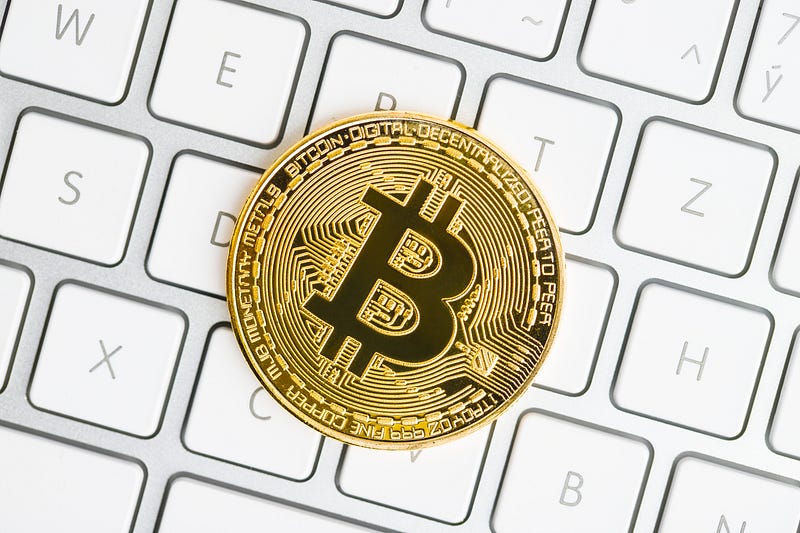
Since the inception of Bitcoin the elusive Satoshi Nakamoto has etched itself into the folklore and history of the blockchain industry. No one could deny the ongoing adoption and usability of cryptocurrencies as we knew it, however, the person, or persons, responsible for the innovation of Bitcoin continued to be shrouded in secrecy.
In even more recent news, a new website has popped up and made the rounds that purports to unveil the true origins and identify of Mr. (or Mrs. for that matter) Satoshi Nakamoto.
Insider information? Clever marketing ploy? Time will tell, however it appears to be timed with the rather reported and followed #Consensus2019 happening in New York City at this time. You can take a look and judge for yourself.
Surprisingly enough, many people, notable and unknown, continued to claim to either know who Satoshi is, or was, or the organizations responsible for the inception of Nakamoto. With all that said, regardless of the numerous tin foil hat conspiracies that abound, several figures have at least a chance of being involved, or vigorously claim to be Satoshi himself.
The first bitcoin block that could only be mined by Satoshi contains the encoded text The Times 03/Jan/2009 Chancellor on brink of second bailout for banks which implies that he/she/they were reading London’s The Times newspaper at the time of the inception of bitcoin.
Craig Wright

Craig Wright most recently has claimed to be Satoshi himself, while continuing to religiously progress his Bitcoin SV, or Satoshi’s Vision.
Delving into Craig’s past we see an extensive history in IT and computer systems.
Wright worked in information technology for a wide variety of companies, not the least of which included OzEmail, K-Mart and the Australian Securities Exchange. He has also worked as a security consultant for Mahindra & Mahindra. During his early career he designed the architecture for possibly the world’s first online casino, Lasseter’s Online which went online in 1999.
Of most important note is his cryptographic messages within blocks mined by the original Satoshi Nakamoto wallets. On 2 May 2016, The BBC and The Economist published articles claiming that Craig had digitally signed messages using cryptographic keys created during the early days of bitcoin’s development. The keys are inextricably linked to blocks of bitcoins known to have been created or “mined” by Satoshi Nakamoto. Jon Matonis, in a blog post, stated “For cryptographic proof in my presence, Craig signed and verified a message using the private key from block #1 newly-generated coins and from block #9 newly-generated coins (the first transaction to Hal Finney).” Gavin Andresen said that he performed a careful cryptographic verification of messages signed, [by Craig], with keys that only Satoshi should possess.
Craig’s ongoing claims to be linked to the original pseudonym of Satoshi Nakamoto are met with wide skepticism throughout the industry. Wright himself states, however,
“I believed that I could do this. I believed that I could put the years of anonymity and hiding behind me. But, as the events of this week unfolded and I prepared to publish the proof of access to the earliest keys, I broke. I do not have the courage. I cannot. When the rumours began, my qualifications and character were attacked. When those allegations were proven false, new allegations have already begun. I know now that I am not strong enough for this. I know that this weakness will cause great damage to those that have supported me, and particularly to Jon Matonis and Gavin Andresen. I can only hope that their honour and credibility is not irreparably tainted by my actions. They were not deceived, but I know that the world will never believe that now. I can only say I’m sorry. And goodbye.”
Craig Wright, if he truly is involved with the original Satoshi Nakamoto group as he claims to be, appears to falter to the ongoing financial and legal ramification pressure that comes with such a monumental claim.
Several ongoing industry insiders claim to collaborate his statements,
Financial cryptographer Ian Grigg claimed:“Craig Wright has just outed himself as the leader of the Satoshi Nakamoto team. I confirm that this is true, both from direct knowledge and a base of evidence.”
New Liberty Dollar issuer Joseph VaughnPerling says he met Wright at a conference in Amsterdam three years before publication of the bitcoin white paper and that Wright introduced himself as Satoshi Nakamoto at that time.
Wright continued to state as of November 2018: “I AM Satoshi.”
One could argue that he continues to progress his own projects, for merited financial gain, however, we may never know the truth behind his involvement with the elusive Nakamoto.
David Kleiman

Operating on the ongoing claims of Craig Wright mentioned above, David Kleiman was a close friend and colleague of Craig and likewise claimed to be involved in the original group during the early inception of Bitcoin.
While nowhere near as publicly outward in claims to be involved, Kleiman worked directly with Craig Wright during the time period of the inception of Bitcoin. Unfortunately, David passed away in 2013, prior to the true height of the Bitcoin growth within the public perception. This, obviously, adds further complexities to unearthing whether David was Satoshi, or involved with the original group to its namesake.
David had an illustrious career in the military, earning US Army Soldier of the year at the young age of 21. He received the Army Achievement Medal and a commendation signed by the Secretary of the Army. The commendation said in part,
“Appearance, knowledge of general military subjects, current events and other subjects covered coupled with your strong dedication to duty, never failed to produce anything but outstanding results.”
Of most notable importance, David continued to be known as a computing wizard within the cryptography scene prior to the inception of cryptocurrencies.
During his time at S-doc where his role was Chief Information Security Officer he developed a Windows encryption tool that surpassed NSA, NIST, and Microsoft Common Criteria Guidelines. This technology was used at NASA, U.S. Dept. of Treasury, Office of the Inspector General, and the US Post Office. Cryptography was routinely used at S-doc to develop several products, broadly aimed at reliable and verifiable transmission of data and messages, centered around the idea of an “unalterable, encrypted audit log system”. While steeped in arguably complex nomenclature, it truly appears as a foundational layer of what was to become crypto as we know it.
After his death, whether through true claims or greedy financial gain, David Kleiman’s estate levied a lawsuit against Craig Wright claiming,
“…over the rights to more than $5,118,266,427.50 worth of bitcoin, claiming Wright defrauded the estate of bitcoins and intellectual property rights. The estate alleged that Kleiman was one of the early bitcoin pioneers and worked with Craig Steven Wright on its establishment as a cryptocurrency. The estate also alleges that on January 12, 2009, Kleiman, Wright and two other people performed a recorded bitcoin transaction. The lawsuit claims that between 2008 and 2013 Kleiman and Wright mined over a million bitcoins. According to Craig Wright, Kleiman lost money due to US government seizing of Costa Rica-based Bitcoin exchange called Liberty Reserve leading to Kleiman’s poverty.”
Kleiman’s untimely death in 2013 may sever any undeniable proof of his involvement with the inception of Bitcoin and the ownership of the Satoshi Nakamoto name.
NSA, CIA, KBG, Government Entity

There is no denying that existing government entities have launched investigations into Cryptocurrencies and their usage as a financial funding model around the world.
With that said, Psyops campaigns for the last 70 years have been wrapped in elusive secrecy and international intrigue. The US Government has been involved in financial operations to cripple various countries as well as increase tensions if a path towards war operations were necessary. Bitcoin and crypto in general as a foundational instant and anonymous method of financial transportation lends itself towards these operations the world round.
During the Obama Administration as far back as 2013, both congress and other notable financial institutions across the US have continued probes into not only the origins of bitcoin, but also the overall usage of crypto within financing, primarily aimed at its possibility within terrorist organizations.
As reported by CoinTelegraph, however,
“As previously reported by Cointelegraph, during a Sept. 7 U.S. Congressional hearing of the Subcommittee on Terrorism and Illicit Finance, FDD CSIF director of analysis Yaya Fanusie claimed that crypto is a “poor form of money for jihadists” and “cold hard cash is still king.” According to Fanusie’s conclusions in the report, terrorist groups such as al-Qaeda, the Islamic State, and others have not had great success in raising funds through cryptocurrency.”
One could argue that if a government entity IS at the helm of the early conception of crypto, it would be in its best interest to give the perception that not only are they not involved, but to also instigate probes in an attempt to affirm to the world they are not in control. The very foundation of crypto is about the open accountability and transparency of financial and information transport. That being said, these government entities stand to lose their secretive power should claims of involvement come to fruition.
At this stage in crypto, however, does it really matter if a government formed the early genesis blocks of bitcoin? While a significant marketshare of Bitcoin resides in the original Satoshi Nakamoto wallets, the cultural movement that has blossomed has created an emerging industry that continues to flourish and expand, despite most recent bearish market trends.
Merchandising / Commercial Connections

Some comical beliefs swirl around the internet claiming that electronic manufacturing giants are at the core of Bitcoin.
Some even suggest that Samsung, Toshiba, Nakamichi, and Motorola together created Bitcoin, as you can tell from their names:
“Satoshi Nakamoto”…
- Samsung and Toshiba together makes — — Satoshi
- Nakamichi and Motorola together makes — — Nakamoto
While POSSIBLE, these possibilities are quite implausible.
Dorian Prentice

One would be remiss to not mention Dorian Prentice due to notable past claims by some individuals claiming his ownership of the Satoshi Nakamoto namesake. It has since been mostly debunked, primarily due to his non-native english speaking background, and the clear writing style differences within the original Bitcoin whitepaper.
As collected within Wikipedia,
“ In a high-profile 6 March 2014 article in the magazine Newsweek, journalist Leah McGrath Goodman identified Dorian Prentice Satoshi Nakamoto, a Japanese American man living in California, whose birth name is Satoshi Nakamoto, as the Nakamoto in question. Besides his name, Goodman pointed to a number of facts that circumstantially suggested he was the bitcoin inventor. Trained as a physicist at Cal Poly University in Pomona, Nakamoto worked as a systems engineer on classified defense projects and computer engineer for technology and financial information services companies. Nakamoto was laid off twice in the early 1990s and turned libertarian, according to his daughter, and encouraged her to start her own business “not under the government’s thumb.” In the article’s seemingly biggest piece of evidence, Goodman wrote that when she asked him about bitcoin during a brief in-person interview, Nakamoto seemed to confirm his identity as the bitcoin founder by stating: “I am no longer involved in that and I cannot discuss it. It’s been turned over to other people. They are in charge of it now. I no longer have any connection.” The article’s publication led to a flurry of media interest, including reporters camping out near Dorian Nakamoto’s house and subtly chasing him by car when he drove to do an interview.
However, during the subsequent full-length interview, Dorian Nakamoto denied all connection to bitcoin, saying he had never heard of the currency before, and that he had misinterpreted Goodman’s question as being about his previous work for military contractors, much of which was classified. In a Reddit “ask-me-anything” interview, he claimed he had misinterpreted Goodman’s question as being related to his work for Citibank. Later that day, the pseudonymous Nakamoto’s P2P Foundation account posted its first message in five years, stating: “I am not Dorian Nakamoto.” However, it is generally believed that Nakamoto’s P2P Foundation account had been hacked, and the message was not sent by him.”
In Conclusion

As the crypto industry continues to frantically search for evidence of the origins of Satoshi Nakamoto, it is the author’s opinion that we tend to lose sight of the true goal of the inception of bitcoin. While it may be interesting to know just WHO Satoshi is, there is no denying the cultural revolution that the original whitepaper has spawned.
From its humble beginnings to its now emerging and established industry status, blockchain continues to be poised to change the very fabric of business and transport of information and finances.
With exchanges, projects, currencies and innovative use cases abounding, regardless of whether we ever actually know the true origin of Satoshi Nakamoto, we will hold close to our hearts the vision of accountable and transparent ledger technology as it continues to expand throughout the world.
Satoshi is not just a person or a group, but is the embodiment of decentralization and innovation of transaction services. I would like to think that Satoshi, be it a single person, a group or an entity, would like us to see a little bit of Satoshi in us all as we progress the ideals and vision for the future of blockchain technology.
Latium & The Cultural Revolution of Crypto

Similarly, Latium remains dedicated and excited by the ongoing growth, evolution and maturity that continues to expand within the blockchain industry. While it may remain a secret just WHO started it, the cultural revolution that continues to grow from this catalyst is undeniable.
Here at Latium we believe in creating open access to a wide and varied demographic of both existing, and new, cryptocurrency users. As we continue our own development and feature expansion, we remain vigilant in our own beliefs that crypto truly is the future of asset ownership and transaction.
Thank you for your interest in the the Latium platform. As always you can follow us on Twitter and join our Telegram Chat for the latest news, updates and developments as we progress.







